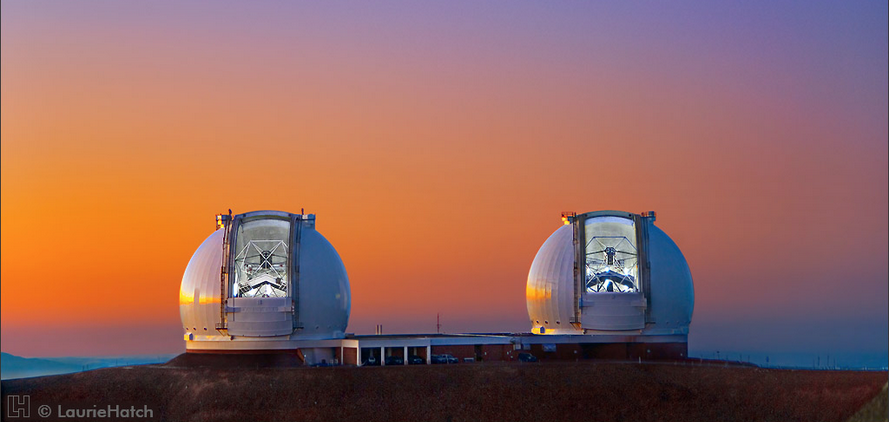Keck Observatory

- View of Keck Observatory's twin telescopes. Photo by Laurie Hatch.
Keck Observatory on Maunakea, Hawaii, hosts the world’s largest optical and infrared telescopes.
UC Observatories acts a managing partner of the W. M. Keck Observatory on Maunakea, Hawaii. From the summit of Hawaii’s dormant Maunakea volcano, UC astronomers probe the local and distant Universe with unprecedented power and precision.
Their instruments are the twin Keck Observatory telescopes—the world’s largest, and most scientifically productive optical and infrared telescopes. Each telescope stands eight stories tall, weighs 300 tons and operates with nanometer precision. The telescopes’ primary mirrors are 10 meters in diameter and are each composed of 36 hexagonal segments that work in concert as a single piece of reflective glass.
In the middle of the Pacific Ocean, Hawai’i Island is surrounded by thousands of miles of thermally stable seas. The 13,796-foot Maunakea summit has no nearby mountain ranges to roil the upper atmosphere. Few city lights pollute Hawaiian night skies, and for most of the year, the atmosphere above Maunakea is clear, calm and dry.
Because of the large size of the 10-meter primary mirrors, the Keck Observatory telescopes offer the greatest potential sensitivity and clarity available in astronomy. Their performance, and the performance of all ground-based telescopes, is limited by the turbulence of the Earth’s atmosphere, which distorts astronomical images. Astronomers have recently overcome the effect of atmospheric blurring using an established and fundamental technique called adaptive optics (AO).
Text courtesy of Keck Observatory.
